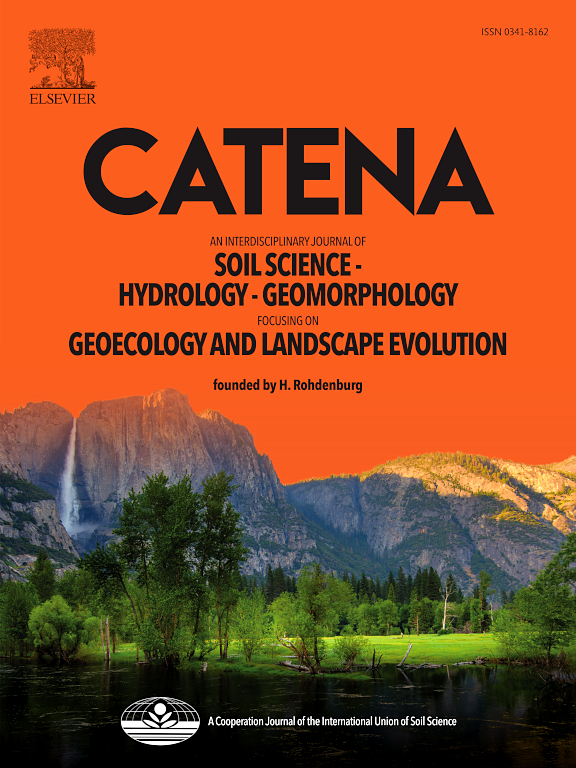Changes in accumulation of land-based organic matter under recent climate change and anthropogenic impact: A tropical coastal perspective
IF 5.4
1区 农林科学
Q1 GEOSCIENCES, MULTIDISCIPLINARY
引用次数: 0
Abstract
Tropical continental shelves play an important role in the global carbon cycle especially in the context of increased anthropogenic interference and climate change. However, the long-term fate and response of sedimentary organic carbon (OC) in these regions remain poorly understood. In this study, we analyzed bulk OC and molecular biomarkers in a sediment core collected from the lower Gulf of Thailand, and compiled with several published records of sedimentary organic matter (OM) from other tropical Asian margins. Our results reveal a dramatic ∼ 40 % increase in terrestrial OC inputs since the 1980s, likely driven by the effects of accelerated coastal erosion from rising sea levels and the degradation of mangrove ecosystems. In addition, shifts in regional human activities, including changes in energy consumption patterns, have altered the sources of pyrogenic OM, contributing to the observed spatial and temporal variability of anthropogenic OM across tropical coastal margins. Molecular fingerprints highlight recent changes in the accumulation of land-based OM, showing an increased presence of erosion-derived and degraded OC, along with pyrogenic OM. This shift is linked to the combined effects of coastal retreat and basin-wide emissions, influenced by both natural climate forces and anthropogenic activities.
近期气候变化和人为影响下陆基有机质积累的变化:热带沿海视角
热带大陆架在全球碳循环中发挥着重要作用,特别是在人为干扰和气候变化加剧的背景下。然而,这些地区沉积有机碳(OC)的长期去向和响应尚不清楚。在这项研究中,我们分析了在泰国湾下游收集的沉积物岩心中的大块OC和分子生物标志物,并与其他热带亚洲边缘的沉积有机质(OM)记录进行了汇编。我们的研究结果显示,自20世纪80年代以来,陆地OC输入急剧增加了40%,这可能是由于海平面上升和红树林生态系统退化加速海岸侵蚀的影响。此外,区域人类活动的变化,包括能源消费模式的变化,已经改变了热源性有机质的来源,导致观测到的热带沿海边缘人为有机质的时空变化。分子指纹图谱强调了陆基有机质积累的近期变化,表明侵蚀性和降解性有机质以及热原性有机质的存在增加。这种转变与海岸退缩和全流域排放的综合影响有关,受到自然气候力量和人为活动的影响。
本文章由计算机程序翻译,如有差异,请以英文原文为准。
求助全文
约1分钟内获得全文
求助全文
来源期刊

Catena
环境科学-地球科学综合
CiteScore
10.50
自引率
9.70%
发文量
816
审稿时长
54 days
期刊介绍:
Catena publishes papers describing original field and laboratory investigations and reviews on geoecology and landscape evolution with emphasis on interdisciplinary aspects of soil science, hydrology and geomorphology. It aims to disseminate new knowledge and foster better understanding of the physical environment, of evolutionary sequences that have resulted in past and current landscapes, and of the natural processes that are likely to determine the fate of our terrestrial environment.
Papers within any one of the above topics are welcome provided they are of sufficiently wide interest and relevance.
 求助内容:
求助内容: 应助结果提醒方式:
应助结果提醒方式:


